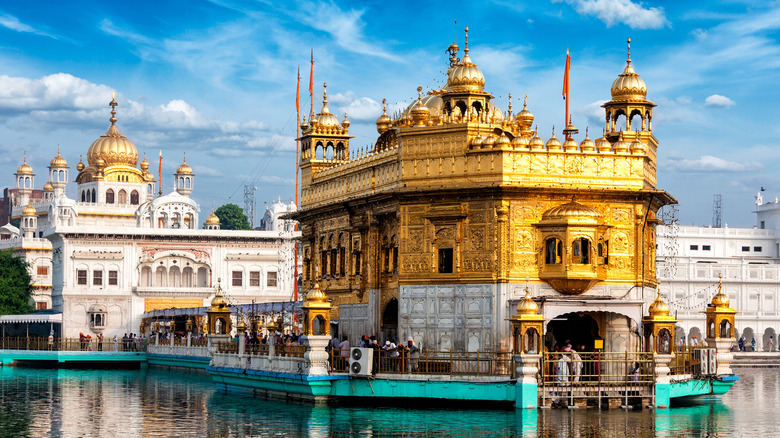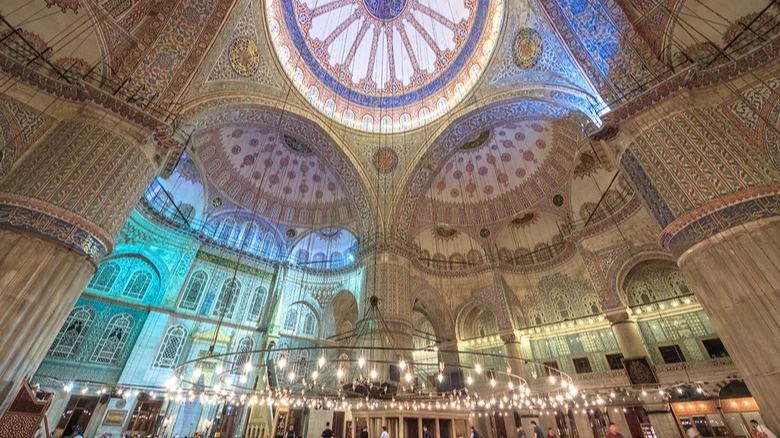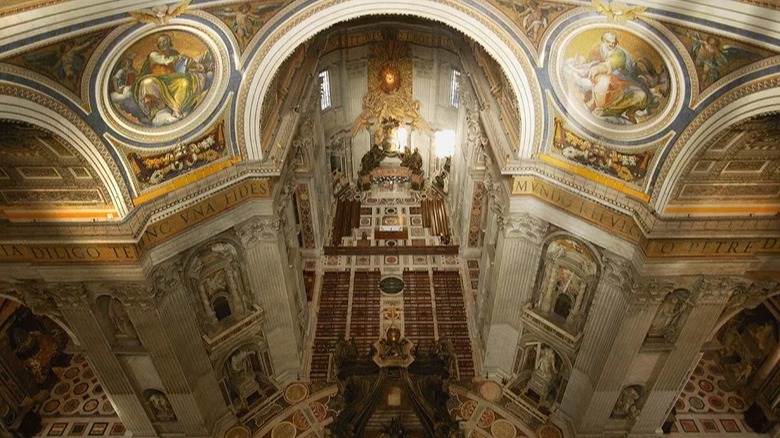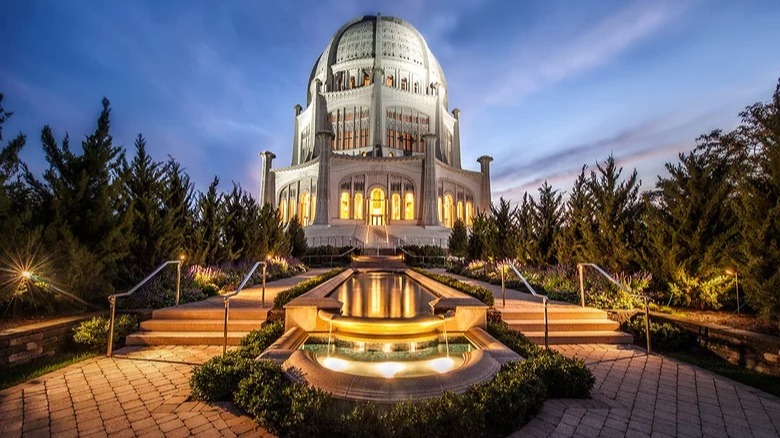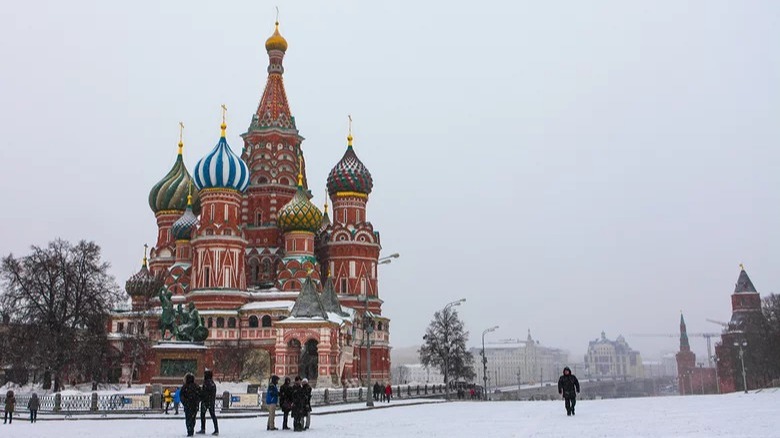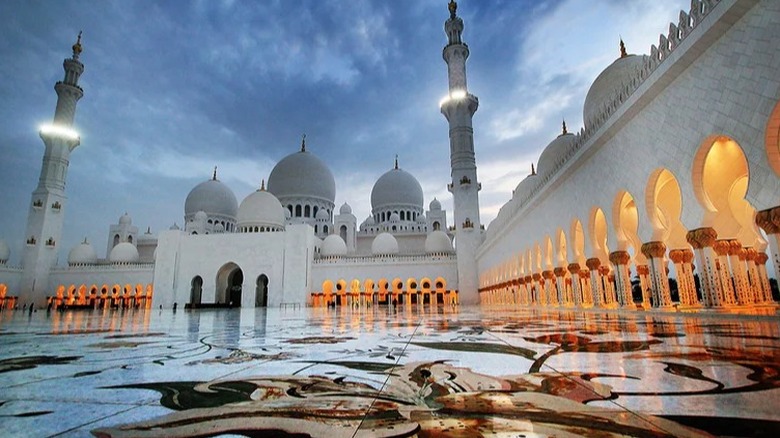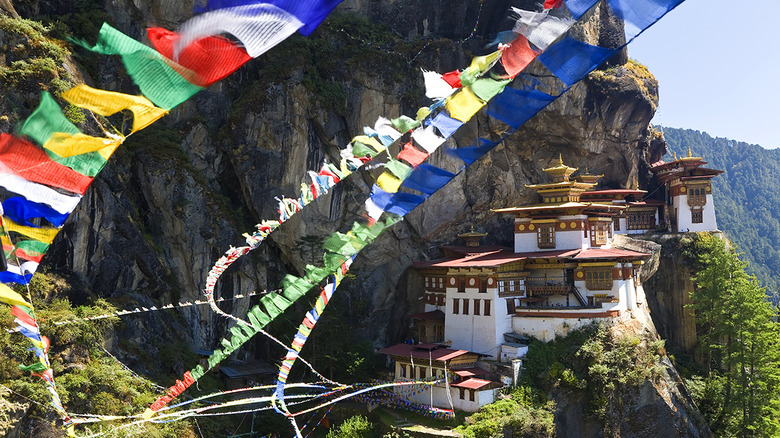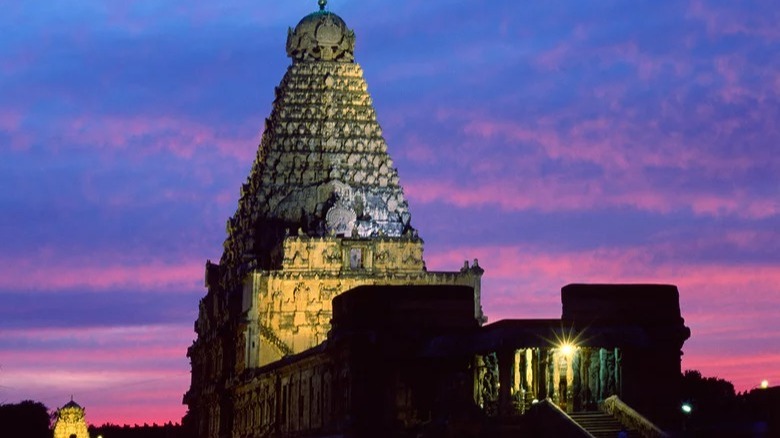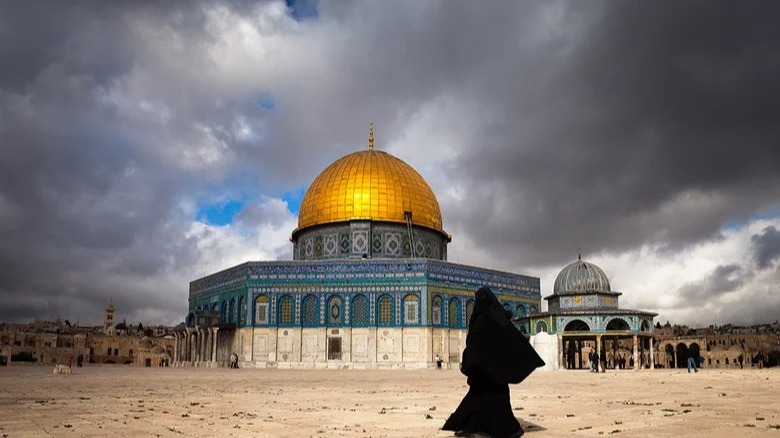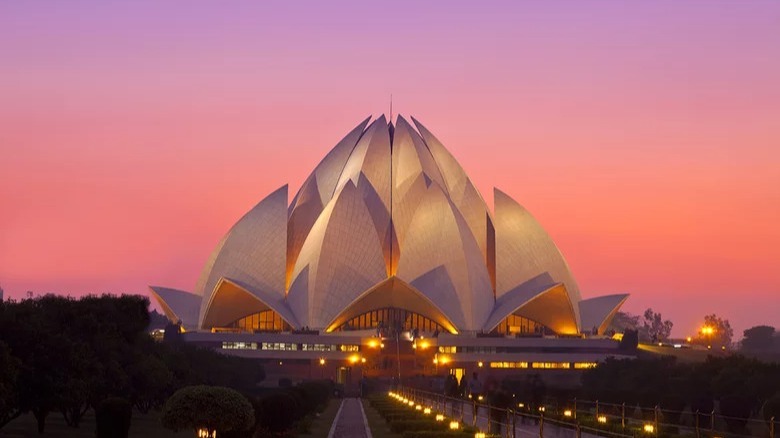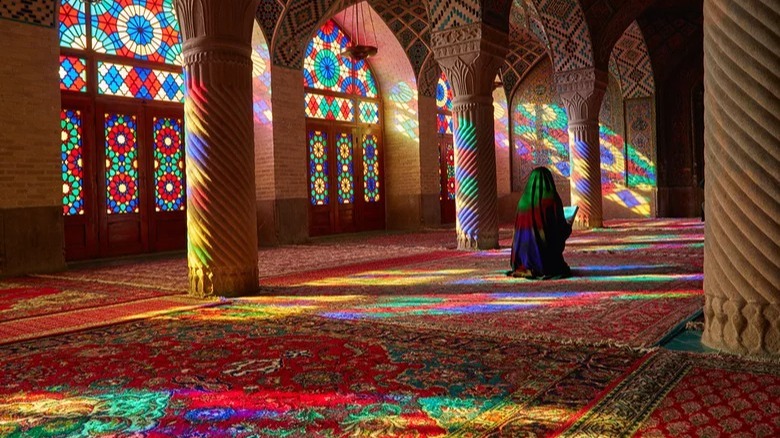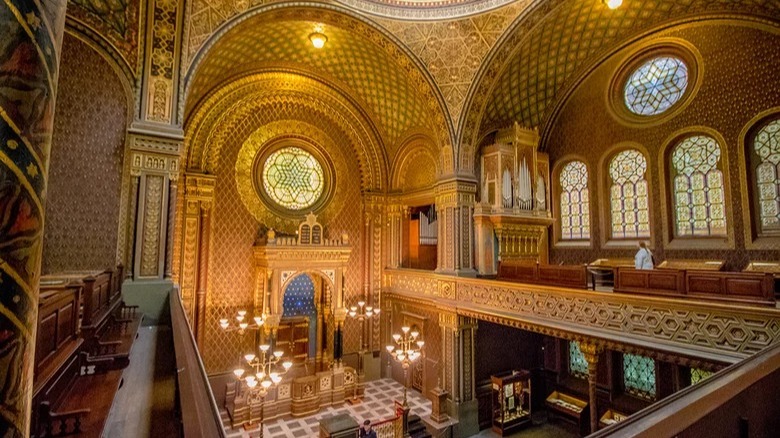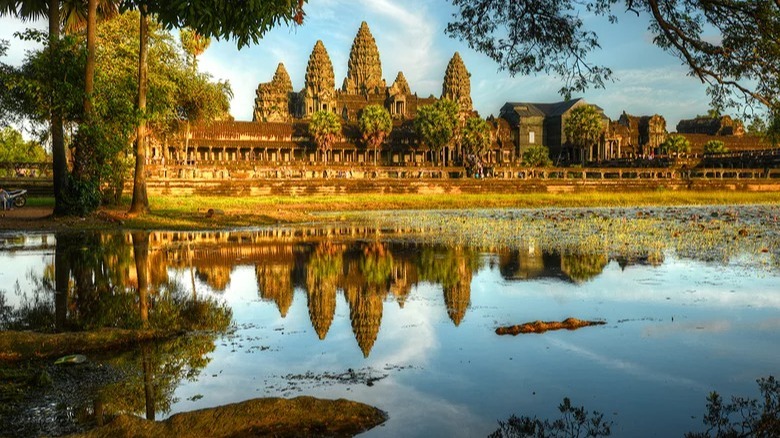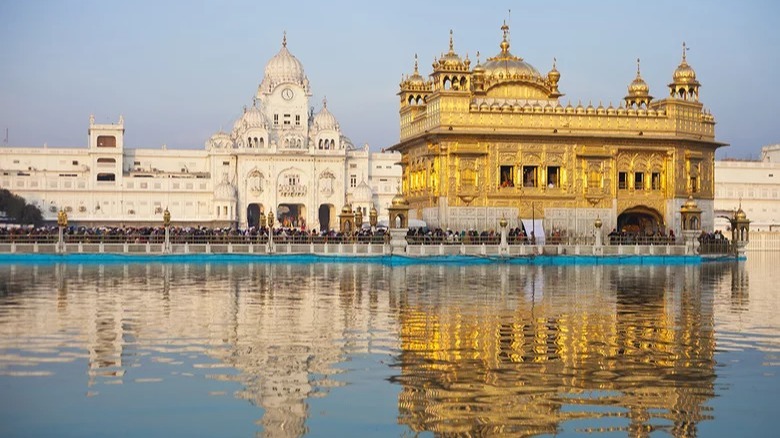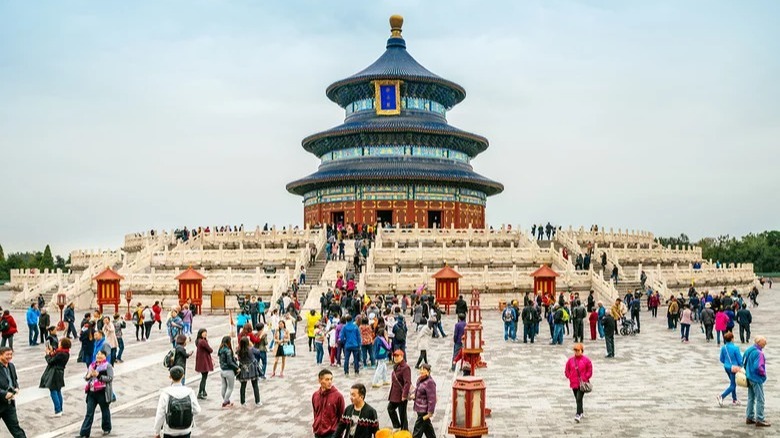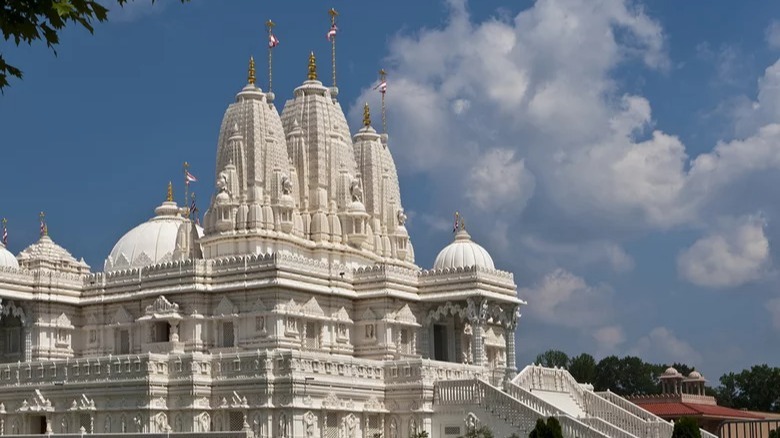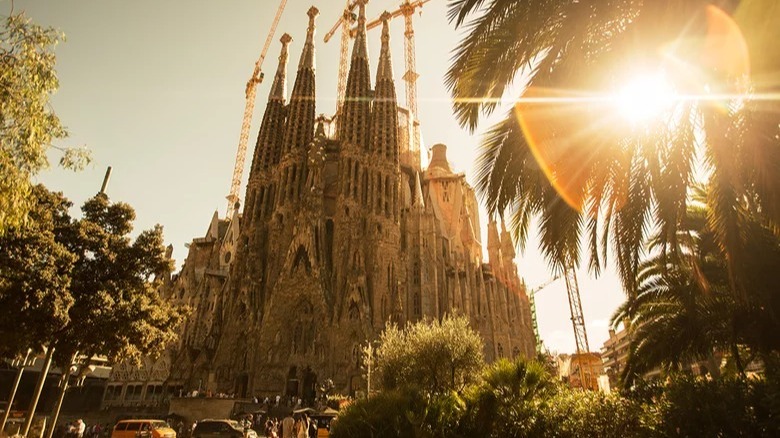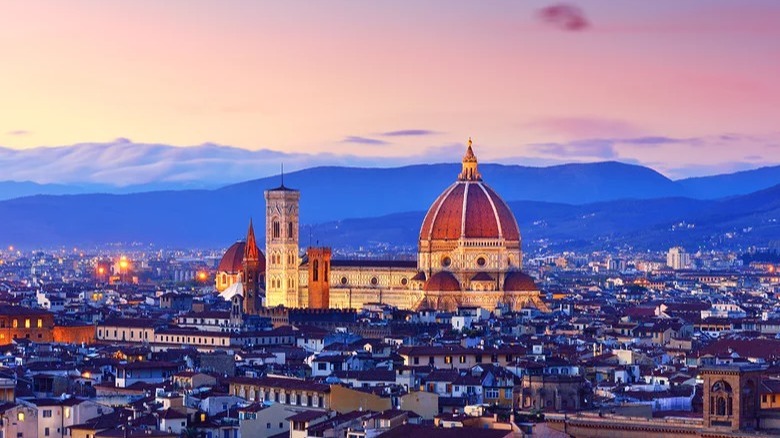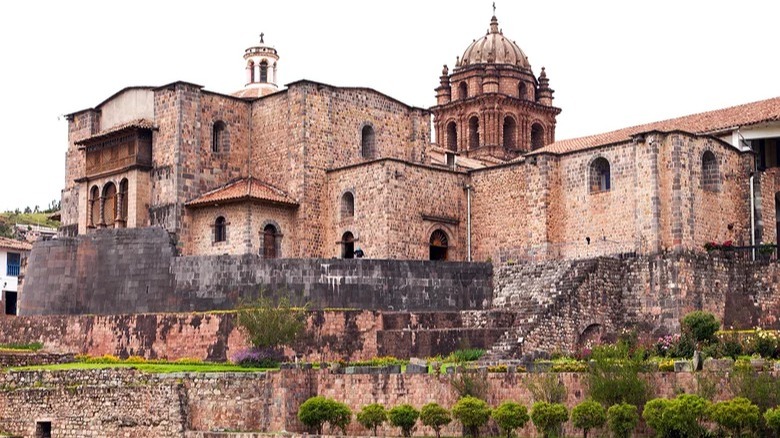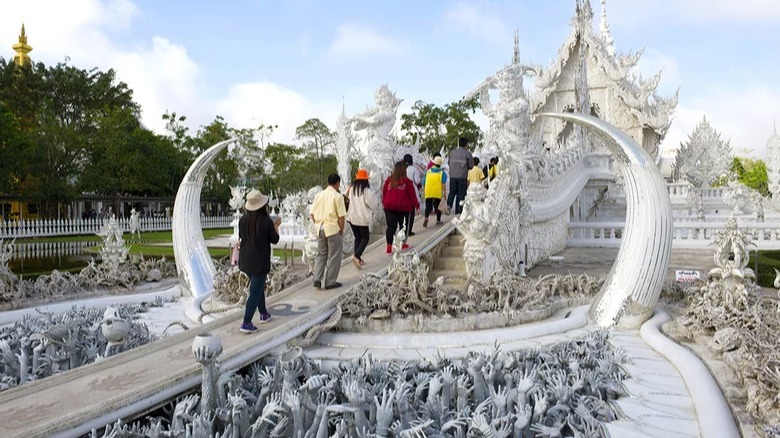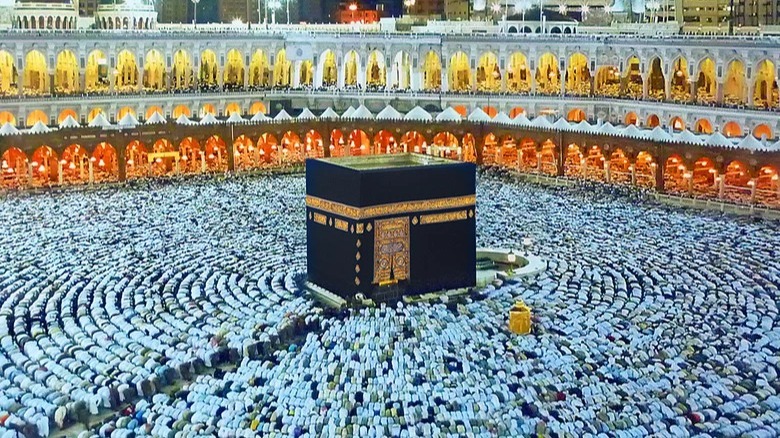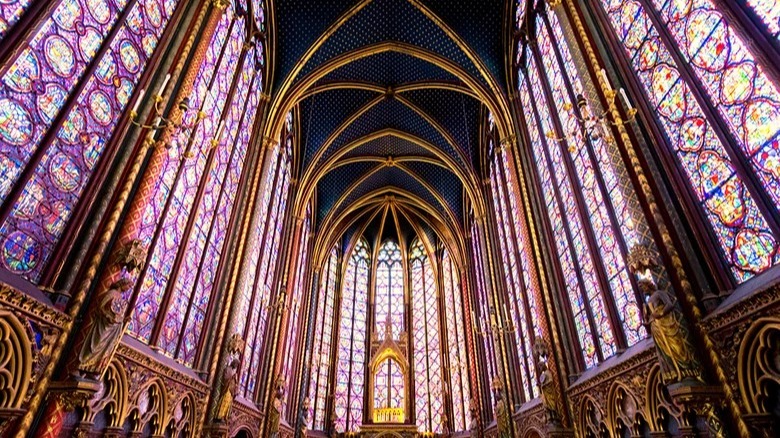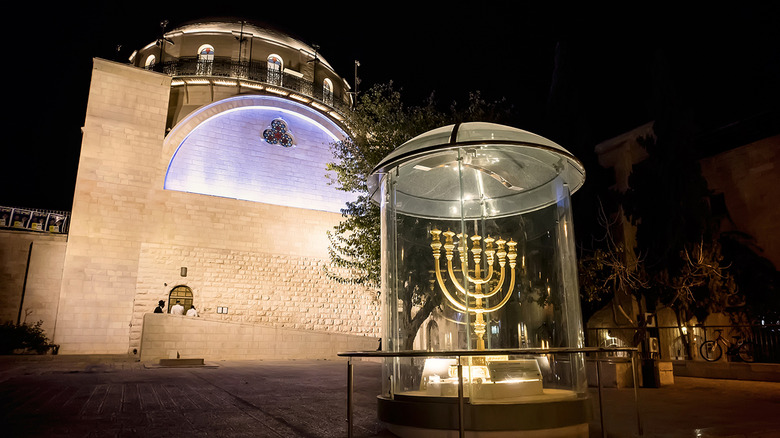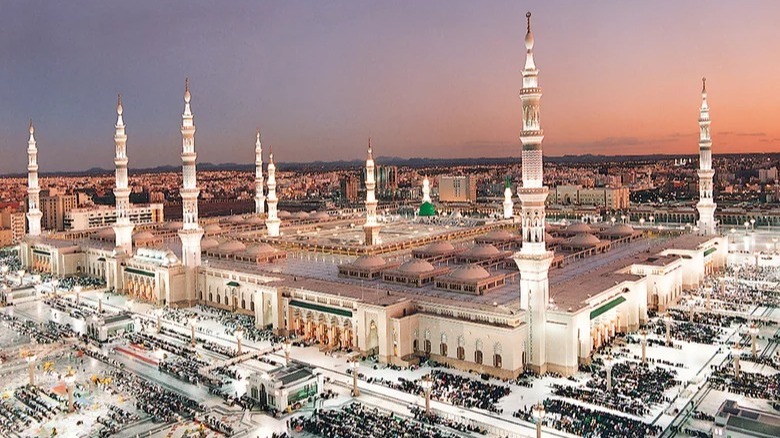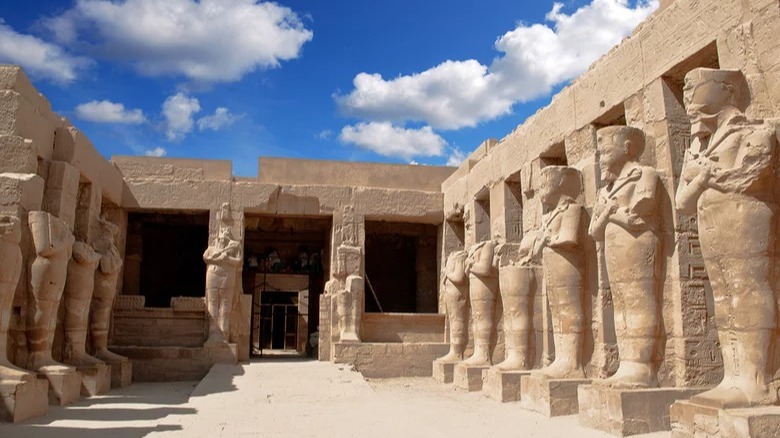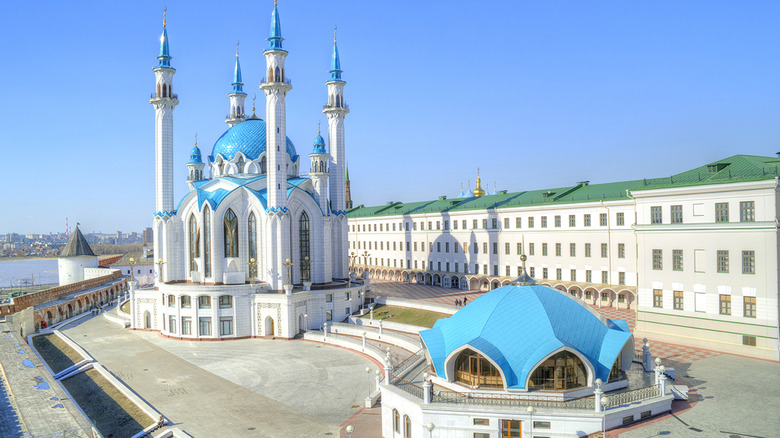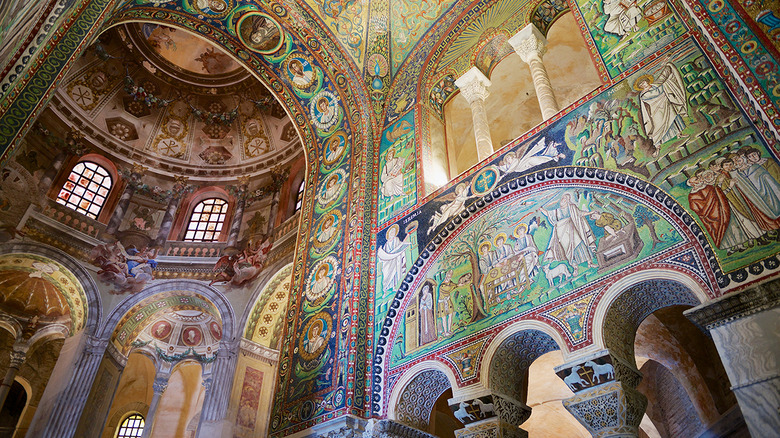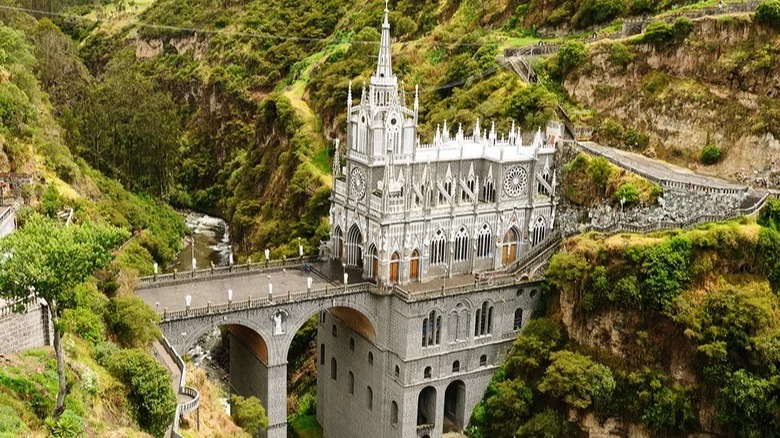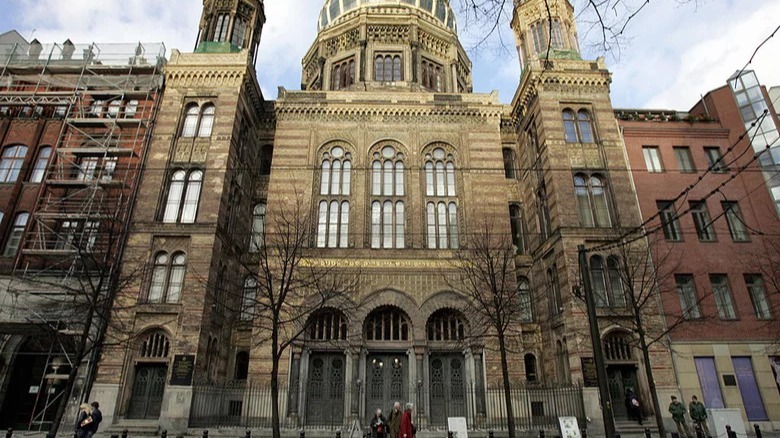Awe-Inspiring Places Of Worship From Around The World
Places of worship are known to have some of the most mesmerizing architecture — not to mention stories that provide fascinating details and histories of our civilization. No matter the religion or culture, the grandeur and majesty of places of worship can be jaw-dropping. Each of these places of worship transcends any system of belief, bringing together people from every corner of the world. They are places of worship, so out of respect, it is best to look up rules for appropriate attire and behavior before visiting.
Blue Mosque/the Sultanahmet Mosque
The Blue Mosque, also known as Sultanahmet Camii, is a historic and breathtaking place of worship in Istanbul, Turkey. It's referred to as the Blue Mosque because of the thousands of glistening, blue tiles adorning the interior walls. The Blue Mosque is a stunning example of classic Ottoman architecture with traditional Islamic elements.
St Peter's Basilica
St. Peter's Basilica in the Vatican may be constantly swarming with tourists, but it doesn't make it any less magnificent. It's a crossover of Italian culture, religion and renaissance with Michelangelo as its primary designer. Vatican City, the universal headquarters of the Catholic Church, is also the Pope's residence.
Bahá'í House of Worship
The Baha'i House of Worship, located in Willmette, a northern suburb of Chicago, is the only Baha'i temple in North America. The beautiful, detailed exterior is symmetrical on all nine sides — nine is believed to have mystical properties by Baha'i followers. The gardens, some with reflecting pools, are also part of the sacred space and serve as outdoor prayer spaces, although visitors are more than welcome to simply lay back in the grass and unwind.
Saint Basil's Cathedral
The psychedelic and quirky Saint Basil's Cathedral in Moscow's Red Square is hard to miss with its colorful exterior and swirly domes. It was commissioned by Russian Tsar Ivan IV, "The Terrible" and constructed between 1554 and 1560. According to popular legend, the cathedral was built by an Italian architect who was later blinded by Ivan IV so that he could never replicate the design of the building anywhere else.
Sheikh Zayed Mosque
This grand mosque in the United Arab Emirates is one of the world's largest and most extravagant. The style of the building is an ode to many Muslim civilizations with architectural influences from Turkey, Morocco, Pakistan, Egypt and other Islamic countries. There is no dull side of the mosque, with glistening onion-top domes overhead, shiny pools spanning the courtyard, marble tiles with hand-painted flowers and gemstones all throughout the interior. Verses of the Quran are also written in calligraphy in the hollows of the dome and painted with gold leaf. The mosque, with a capacity to hold 40,000 visitors, has an open-door policy, which means tourists and worshippers alike can stroll in to pray or just witness the spectacle.
Paro Taktsang
Paro Taktsang is a sacred Himalayan Buddhist temple on a cliffside in the upper Paro valley in Bhutan. It was built in 1692 and sits at an elevation of more than 10,000 feet. The Monastery has three distinct and mystical paths leading to the holy place. The first path passes through a pine forest, with prayer bannerettes all around symbolizing protection from evil forces and good luck. The other two paths are higher off the ground and pass through a plateau called "a hundred thousand fairies." The temple isn't the only thing that's awe-inspiring, with majestic mountain views and lush green valleys down below.
Brihadisvara Temple at Thanjavur
The Brihadisvara Temple at Thanjavur in India is one of the Great Living Chola Temples, built by the kings of the Chola Empire that ruled over southern India and the neighboring islands in the 11th and 12th centuries. The temple is of medieval-style architecture and is one of the largest South Indian temples, with walls embellished in exquisite murals.
Dome of the Rock
This holy site tends to hold extra significance because the Dome of the Rock is equally sacred to people of Islamic and Jewish faiths. The interior and exterior of the structure is adorned with marble and mosaics with the gold dome on top. The Dome's design does not include any depiction of human or animal forms and instead features intricate Arabic script and images of jewels and crowns.
Lotus Temple
Like all Baha'i temples, the Lotus Temple is characterized by a nine-sided construction. The overall effect of this temple in India is breathtaking. It was designed to look like a floating lotus flower about to bloom with 27 large "petals" arranged in three levels. The lotus flower symbolizes purity, beauty and divinity in Baha'i teachings.
Nasir ol Molk Mosque
Visitors who step foot in the colorful Nasir ol Molk mosque — or the Pink Mosque — will likely compare it to a kaleidoscope. Stained glass is not as common a feature of mosques as it is in cathedrals, but the Nasir ol Molk is covered in it. The mosque is considered a masterpiece of Persian architecture and tiling.
Spanish Synagogue
The Spanish Synagogue in Prague was built in 1868 with a striking Moorish interior design, influenced by the famous Alhambra, a palace and fortress complex in Granada, Spain.
Angkor Wat
Angkor Wat is an incredibly popular temple in Cambodia and one of the largest religious monuments in the world. It was transformed into a Buddhist temple toward the end of the 12th century and welcomes tourists from all over the world. From a distance, Angkor Wat is difficult to decipher, but as you get a closer look, you'll notice elevated towers, intricate chambers, various levels of steps and courtyards with stairways. This gorgeous spot also makes for a picture-perfect sunrise.
The Golden Temple
The Harmandir Sahib, also known as the "Golden Temple," is a Sikh gurdwara, or house of worship. Sikhism is a monotheistic religion that originated in Punjab, India. The temple is located in the Indian city of Amritsar and is visited by worshippers from all over the world each day. The water surrounding the temple is believed by Sikhs to have healing powers. The gurdwara was destroyed several times before being rebuilt in the 1800s with copper, marble and gold foil, and the four entrances of the temple, each facing a different direction, are intended to show that people from every walk of life are welcome.
Temple of Heaven
The Temple of Heaven in Beijing was constructed in the early 15th century during the reign of the Ming Emperor Yongle. The famous Forbidden City was also built during this time and is just north of the Temple of Heaven. The fascinating design of the temple symbolizes the relationship between Earth and Heaven.
BAPS Shri Swaminarayan Mandir
This Hindu place of worship is a traditional stone temple (called mandir in Hindi) in Atlanta, Georgia. More than 34,000 individual pieces of Turkish limestone, Italian marble and Indian pink sandstone were hand-carved in India and shipped to the U.S. for the temple's construction, which was completed in 2007.
Basilica Sagrada Familia
The first stone of the Basilica Familia in Barcelona was put in place more than 135 years ago by architect Antoni Gaudi. And though the basilica is still unfinished, that doesn't stop visitors from strolling in for worship or just walking through. The basilica hosts international Mass and several celebrations that are open to the general public throughout the year. It is expected to be fully constructed by 2026, with the focus now on completing the six central towers.
Florence Cathedral
Among the closely lined terra-cotta roofs of Florence is an even taller, more pointy terra-cotta roof of the Florence Cathedral in Italy. The cathedral, also called the Cathedral of Santa Maria del Fiore, was built in 1434 and is the fourth largest church in the world. The Gothic-style building is a work of art itself, with specifically made sculptures, stained-glass windows and a remarkable bell tower. A storybook cathedral such as this definitely belongs on a bucket-list.
Qurikancha
A visit to Peru is likely to be unforgettable, especially with sites that hold such a rich history. Qurikancha in Cusco, Peru, was an Incan icon dedicated to the Sun God, Inti. During the Inca rule in 1654, the temple's walls were covered in silver and gold plates and its gold-covered roof glittered in the sunlight. The Incans were later forced to turn over their land, including the extravagant walls of Qurikancha, to the Spanish colonists, who later built the Church of Santo Domingo on the same site.
Wat Rong Khun
Wat Rong Khun in Thailand is known as the White Temple. The mystical building is painted completely white, with glass and mirror installations on the outside. The gives the effect of an ice crystal castle complete with a bridge leading to the entrance. Wat Rong Khun is just one of over 33,000 Buddhist temples in Thailand.
Kaa'ba
Mecca, Saudia Arabia, holds the most sacred site in Islam — Al-Kaʿbah al-Musharrafah, simply known as the Kaaba, which means "cube" in Arabic. The cubic building is at the center of the Great Mosque of Mecca, which is the main setting for the Hajj and Umrah pilgrimages that occur in the month of Dhu al-Hijjah of the lunar calendar. During the five daily prayers, Muslims all over the world face in the direction of the Kaaba.
Sainte-Chapelle
One of the most impressive features of the Sainte-Chapelle in Paris is the 1,113 stained-glass windows that depict scenes from the Old and New Testaments. The Gothic-period chapel was built in just seven years and was meant to house precious Christian relics, which included Christ's crown of thorns.
Hurva Synagogue
The Hurva Synagogue is located in the Jewish Quarter of the Old City of Jerusalem, which is also home to the Western Wall, Dome of the Rock and the Church of the Holy Sepulchre. It was constructed in 1864 but destroyed during the 1948 Arab-Israeli war. The significance of the synagogue is in part because of its tumultuous history. The new Hurva Synagogue was constructed in March 2010.
Al-Masjid an-Nabawi
Al-Masjid an-Nabawī is a mosque built by the Islamic Prophet Muhammad in Medina, Saudi Arabia. It was one of the first mosques built by Muhammad and is now one of the largest, most sacred mosques in the world. Visiting Al-Masjid an-Nabawi is a life-changing experience for the millions of worshippers who have done so.
Karnak Temple Complex
Egypt is an increasingly trendy place to visit, with lots to see and do. One of the largest ancient religious sites in the world is the Karnak, a large temple complex made of decayed chapels near the village of El-Karnak, right alongside the Nile river. Construction of the site began during the reign of Pharaoh Senusret, around 2000 B.C.
Qolşärif Mosque
The Qolşärif Mosque is actually an (almost) exact replica of a legendary mosque from the 16th century. At the time of its construction, the people in Kazan, Russia, practiced Islam and spoke the Tatar language. Eventually, the mosque was destroyed when an ethnic Russian ruler gained power. The Qolşärif Mosque's reconstruction began in 1996 and was completed in 2005, with modern Russian and Islamic notes throughout the building.
Basilica di San Vitale
This sixth-century monument is considered a masterpiece of Byzantine architecture. The church in Ravenna, Italy, is known for the colorful mosaics of Christian symbols and portraits painted on the interior walls and ceilings.
Las Lajas Sanctuary
The Las Lajas Sanctuary in Colombia has a Gothic revival style of architecture. It's located on a forested gorge in the Colombian Andes and is 11 kilometers from the Rumichaca Bridge that connects Colombia and Ecuador.
The New Synagogue
The New Synagogue was built in Berlin between 1859 and1866. The architecture was inspired by Moorish design. The building was badly damaged during WWII and has been reconstructed into one of the most mesmerizing places on earth.
